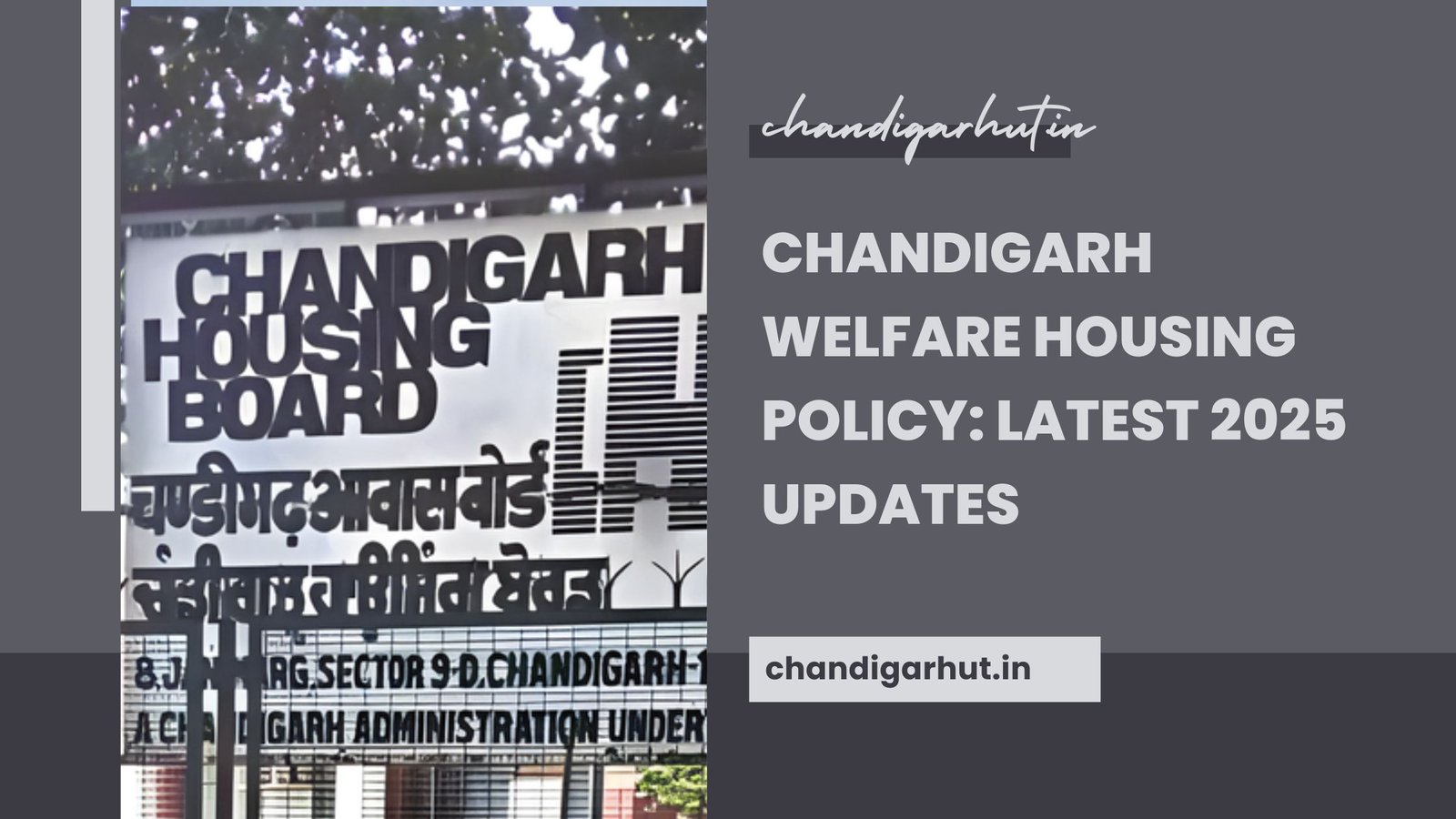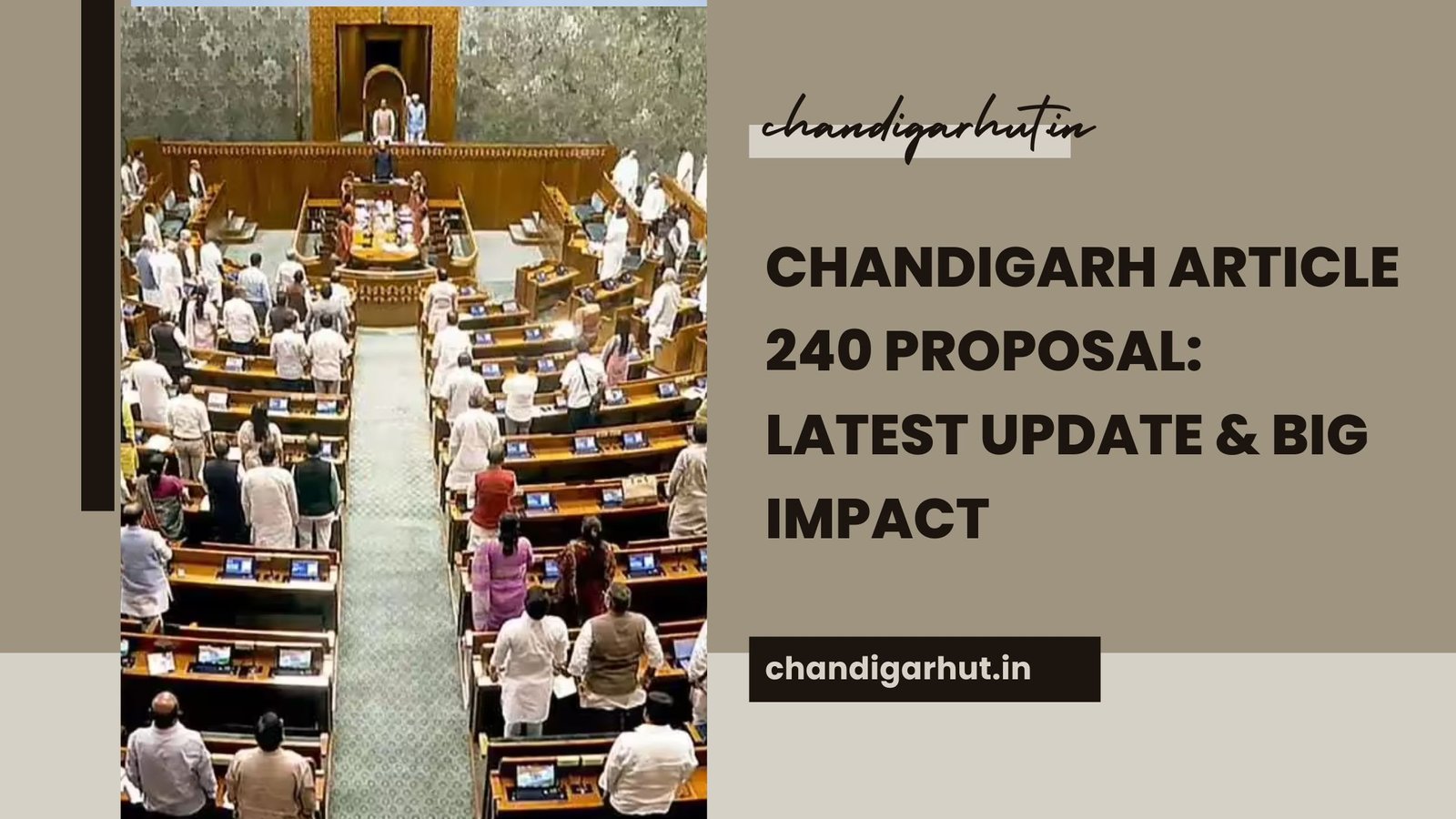The Chandigarh Welfare Housing Policy has recently undergone major reforms, making housing support more accessible, transparent, and financially manageable for citizens—especially those with disabilities, senior residents, and EWS families. These changes reflect a progressive approach by the UT Administration and align with welfare-centric governance.
This detailed guide covers all new updates, benefits, eligibility rules, and real-time changes announced across Chandigarh in 2024–2025.
Whether you’re a resident, a guardian, or simply tracking policy developments, this is the most comprehensive coverage available.
Chandigarh Welfare Housing Policy – What Is It & Why It Matters (2025 Overview)
The Chandigarh Welfare Housing Policy is the city’s structured approach to provide affordable, secure, and supportive housing options for:
- Persons with disabilities (PwD)
- Mental health patients
- Senior citizens
- Economically Weaker Sections (EWS)
- Low-income families
- Dependent beneficiaries
This policy governs housing models like:
- Group Homes
- EWS rental homes
- Social welfare accommodations
- Transit shelters
- Assisted living setups
Why It Matters in 2025
Recent updates have made the Chandigarh Welfare Housing Policy more:
- Affordable
- Transparent
- Guardian-friendly
- Compliant with national rights-based laws
- Accessible to EWS groups
- Inclusive for disabled residents
The biggest breakthrough has been the reduction of the Group Home deposit and the removal of outdated requirements.
Major 2025 Update: Group Home Security Deposit Reduced by Nearly 70%
One of the most impactful reforms under the Chandigarh Welfare Housing Policy is the dramatic reduction of the Group Home deposit.
Previous Deposit: ₹20,00,000
New Deposit (2025): ₹6,00,000 (approx.)
This change came after years of objections from families, feedback from parents, and strong observations by the High Court that the earlier deposit was “exorbitant.”
Why This Matters
- Makes the scheme affordable for middle-class and lower-middle-class families.
- Aligns with humanitarian housing norms.
- Encourages more parents to secure long-term care for dependent children.
The Chandigarh Welfare Housing Policy now officially positions affordability as a core principle.
Chandigarh Welfare Housing Policy: Room-Wise New Deposit Structure
Under the revised policy, new deposits apply based on room category:
| Room Type | Earlier Deposit | New Deposit (2025) |
|---|---|---|
| Sharing Room | ₹20 lakh | ₹2.88 lakh |
| Single Room | ₹20 lakh | ₹4.5 lakh |
| Suite | ₹20 lakh | ₹6.3 lakh |
This is one of the most progressive revisions introduced through the Chandigarh Welfare Housing Policy.
Cross-Subsidy Removed – Major Relief for EWS Families
Earlier, the policy required EWS residents to indirectly subsidize other categories.
This clause has now been removed.
Impact on Citizens
- EWS residents no longer bear additional burdens.
- More equitable distribution of financial responsibility.
- Transparent fee and maintenance structure.
This aligns perfectly with the core goals of the Chandigarh Welfare Housing Policy—equity, fairness, and accessibility.
Guardian Requirement Reduced From 3 to 2 (Policy Update)
In a landmark modification, the Chandigarh Welfare Housing Policy now requires only two guardians instead of three.
Why This Is Important
- Many single-parent families struggled to arrange three guardians.
- Practical and realistic for households with limited support networks.
- Reduces admission delays.
This simplifies enrollment for Group Homes and makes the welfare system more compassionate.
New EWS Facility Planned in Sector 15 – Big Expansion Move
To strengthen the Chandigarh Welfare Housing Policy, the Administration is developing a dedicated EWS housing facility in Sector 15.
Key Highlights
- Specially designed for EWS residents.
- May house temporary defaulters from Group Homes.
- Will support welfare-linked rehabilitation.
This expansion underscores the city’s commitment to inclusive housing.
Chandigarh Welfare Housing Policy: Compliance with Mental Healthcare Act 2017
One of the major gaps previously pointed out by parents and experts was non-compliance with the Mental Healthcare Act, which mandates:
- Right to community living
- Freedom from discrimination
- Accessible housing options
- State responsibility for long-term care
With the 2025 changes, the Chandigarh Welfare Housing Policy moves closer to full compliance.
New SOPs Introduced for Transparency (2025 Edition)
The Chandigarh Administration has released updated Standard Operating Procedures under the Chandigarh Welfare Housing Policy.
What’s New?
- Mandatory financial disclosure by parents/guardians.
- Long-term care succession planning.
- Clear guidelines for admission and exit.
- Transparent fee structure.
- Welfare committee involvement.
These SOPs strengthen trust and operational clarity.
Human Rights Commission’s Role in Improving the Policy
The Chandigarh Human Rights Commission (and at times, the Punjab Commission) raised concerns regarding:
- High deposits
- Lack of transparency
- Discriminatory clauses
- Violation of PwD rights
These concerns influenced the latest changes to the Chandigarh Welfare Housing Policy, making it more humane and rights-based.
Chandigarh High Court’s Observations That Accelerated the Reforms
The High Court has repeatedly emphasized:
- The need for affordability
- Removal of arbitrary conditions
- Ensuring equal access
- Aligning with national disability laws
This judicial oversight was critical in reshaping the Policy into its 2025 version.
Eligibility Under the New Chandigarh Welfare Housing Policy
Eligible Beneficiaries
- Persons with disabilities (IDD, ASD, mental disability)
- Mentally ill patients requiring assisted care
- Senior citizens with no family support
- Economically Weaker Sections
- Government welfare-linked individuals
General Conditions
- Chandigarh residency proofs
- Medical/mental health certificates (for Group Homes)
- Guardian details
- Financial declarations
The Policy ensures that eligibility checks remain fair yet accessible.
Benefits of the Updated Chandigarh Welfare Housing Policy
The updated Chandigarh Welfare Housing Policy brings a transformative shift in how vulnerable groups — including Persons with Disabilities (PwDs), economically weaker sections (EWS), and socially disadvantaged residents — can access safe, affordable, and dignified housing in the city. The 2025 reforms are not merely administrative adjustments; they mark a deep structural redesign aimed at inclusion, affordability, transparency, and long-term welfare.
Below is an expanded breakdown of the key benefits created by the latest policy update.
Top Benefits of the Chandigarh Welfare Housing Policy
Affordable Long-Term Housing
One of the most impactful benefits of the updated Chandigarh Welfare Housing Policy is the massive reduction in financial burden for beneficiaries.
The nearly 70% cut in security deposit for Group Homes in Sector 31 is a game-changer, making long-term residential care accessible to families who previously struggled with high upfront costs.
For many middle-class and low-income families, affordability is the single biggest barrier. By removing that barrier, the policy expands housing access to hundreds of eligible individuals across Chandigarh.
Transparent Admission Norms
Earlier, welfare housing admission often involved a complex set of eligibility standards, which made the process feel opaque.
The updated Chandigarh Welfare Housing Policy simplifies this by:
- Reducing documentation requirements
- Clearly defining guardian responsibilities
- Eliminating the EWS cross-subsidy (which previously complicated cost structures)
The shift toward single-window verification, standardized documentation, and simplified financial obligations ensures fairness and transparency — eliminating ambiguity and reducing delays.
Reduced Guardian Burden
The reduction of guardian requirements from three to two is a major relief for families, especially smaller families or those without extended networks.
This change recognizes the real-life difficulties of identifying multiple guardians for adults with disabilities or special needs.
The updated Chandigarh Welfare Housing Policy now reflects a more compassionate and realistic understanding of family structures, making admissions more accessible.
EWS-Focused Development
A major highlight of the reforms is the planned welfare housing facility in Sector 15 specifically aimed at EWS residents.
This ensures:
- Dedicated infrastructure
- Area-based welfare services
- Better accessibility to the city’s educational hubs and healthcare centers
- Reduced displacement of low-income families
By integrating EWS needs into urban planning, the Chandigarh Welfare Housing Policy aligns with India’s broader social justice goals.
Disability-Friendly Infrastructure
The policy emphasizes infrastructure that supports dignity and autonomy for Persons with Disabilities. This includes:
- Ramps and wheelchair-friendly pathways
- Modified bathrooms
- Tailored living spaces
- 24×7 support staff
- Safety and monitoring systems
- Accessible community areas
This shift makes Chandigarh one of the few cities in India adopting global accessibility standards for welfare housing.
Government-Backed Security
The updated Chandigarh Welfare Housing Policy strengthens the credibility and safety of welfare homes by placing them under:
- Direct supervision of Chandigarh Administration
- Social Welfare Department oversight
- Periodic auditing and safety checks
This government-backed structure provides families emotional and financial confidence, knowing that their loved ones are in a regulated, secure environment.
Rights-Based Approach
Perhaps the most progressive aspect of the new policy is its alignment with:
- Rights of Persons with Disabilities Act, 2016 (RPWD Act)
- UN Convention on the Rights of Persons with Disabilities
- India’s welfare-based urban development standards
This signals a shift from a purely “accommodation-based” model to a rights-based, dignity-first framework.
Residents don’t just receive housing — they receive legal protection, access to services, and recognition of autonomy.
Why These Reforms Matter
The 2025 edition of the Chandigarh Welfare Housing Policy is more than a routine administrative update. It represents a major step toward:
- Inclusive urban governance
- Social equity
- Dignified care for disadvantaged groups
- Future-ready welfare infrastructure
It is now regarded as one of India’s most progressive welfare housing frameworks, offering a benchmark for other states to follow.
The 2025 version of the Chandigarh Welfare Housing Policy is one of India’s most progressive welfare housing frameworks.
Frequently Asked Questions (FAQs)
Q1. What is the Chandigarh Welfare Housing Policy?
The Chandigarh Welfare Housing Policy is the UT’s housing framework designed to support disabled residents, EWS groups, and vulnerable communities with affordable and structured accommodation.
Q2. Has the deposit for Group Homes changed under the Chandigarh Welfare Housing Policy?
Yes, the Policy now reduces the Group Home deposit from ₹20 lakh to around ₹6 lakh.
Q3. Are EWS residents benefited under the Chandigarh Welfare Housing Policy?
Absolutely. Under the revised Chandigarh Welfare Housing Policy, the EWS cross-subsidy has been removed, and a dedicated facility in Sector 15 is being planned.
Q4. How many guardians are needed now?
The Chandigarh Welfare Housing Policy now requires only two guardians instead of three, making admissions easier.
Q5. Does the Chandigarh Welfare Housing Policy follow the Mental Healthcare Act?
Yes, the 2025 updates ensure that thePolicyaligns with national disability and mental health laws.
Conclusion:
The Chandigarh Welfare Housing Policy has undergone major improvements, making it more accessible, more humane, and more efficient. With reduced deposits, expanded EWS facilities, new SOPs, and rights-based reforms, Chandigarh is setting an example for welfare housing across India.
If you want more such local updates, policy breakdowns, or Chandigarh guides, visit:
👉 https://chandigarhut.in – Your trusted source for Chandigarh insights.












